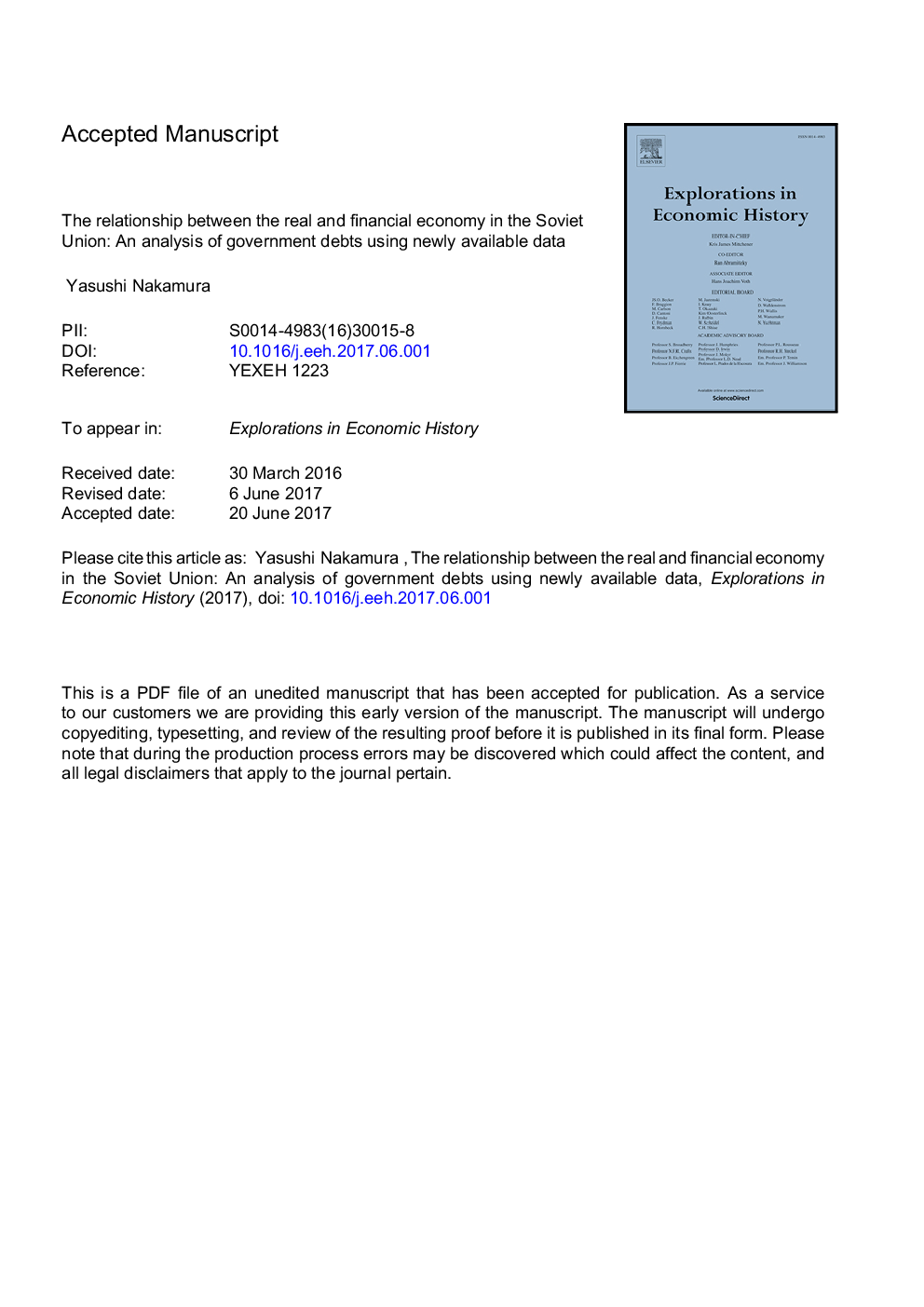| کد مقاله | کد نشریه | سال انتشار | مقاله انگلیسی | نسخه تمام متن |
|---|---|---|---|---|
| 7351940 | 1476961 | 2017 | 54 صفحه PDF | دانلود رایگان |
عنوان انگلیسی مقاله ISI
The relationship between the real and financial economies in the Soviet Union: An analysis of government debts using newly available data
ترجمه فارسی عنوان
رابطه بین اقتصاد واقعی و مالی در اتحاد جماهیر شوروی: تجزیه و تحلیل بدهی های دولتی با استفاده از داده های موجود در دسترس
دانلود مقاله + سفارش ترجمه
دانلود مقاله ISI انگلیسی
رایگان برای ایرانیان
ترجمه چکیده
داده های جدید شوروی در دسترس نشان می دهد که بدهی های دولت به منظور جبران استفاده ناکارآمد از بودجه برای اکثر دوره های شوروی افزایش یافته است. با توجه به مشکل در مدیریت پول نقد بدون اطلاعات و داده های تولید شده توسط بازار و ساختار مالی ساده ی شوروی، بدهی در حال افزایش نشان می دهد که دارایی های غیرفعال انباشته شده در بخش خانوار و دارایی های واقعی ناکارآمد در بخش سازمانی ایجاد شده است. تجزیه و تحلیل تجربی با استفاده از یک مدل اتورگرسیونی بر حسب متغیر بر حسب متغیر زمانی مشخص شد که وجوه عرضه شده به اقتصاد در کاهش تقاضا برای رشد اقتصادی در تقریبا تمام دوره شوروی کمک کرده است. بودجه همچنان به صورت بی فایده مورد استفاده قرار می گیرد، دارایی های غیرفعال انباشته شده و در نتیجه ارزش روبل کاهش می یابد. به این معنا، مدیریت پولی شوروی ناکارآمد بود. تحقیقات آینده شامل تلاش برای بررسی پاسخگویی مقامات تنظیم قیمت به تغییرات وضعیت پولی و مالی، درک مدیریت پولی در سطح جمهوری و تعیین میزان بهره وری استفاده از بودجه می شود.
موضوعات مرتبط
علوم انسانی و اجتماعی
علوم انسانی و هنر
تاریخ
چکیده انگلیسی
Newly available Soviet data reveal that government debt increased to compensate for inefficient use of funds for most of the Soviet period. Given the difficulty in managing fiat money without information and data generated by the market, and the simple Soviet financial structure, the increasing debt suggests that non-performing financial assets accumulated in the household sector, and inefficient real assets built up in the enterprise sector. The empirical analysis using a small time-varying parameter vector autoregression model identified that funds supplied to the economy had contributed at a decreasing rate to economic growth during nearly the entire Soviet period. Funds continued to be used wastefully, non-performing financial assets accumulated, and consequently the value of the ruble was decreasing. In this sense, Soviet monetary management was inefficient. Future research will include efforts to investigate responsiveness of price regulating authorities to changes in monetary and financial situation, to understand monetary management on the republic level, and to quantify the efficiency of use of funds.
ناشر
Database: Elsevier - ScienceDirect (ساینس دایرکت)
Journal: Explorations in Economic History - Volume 66, October 2017, Pages 65-84
Journal: Explorations in Economic History - Volume 66, October 2017, Pages 65-84
نویسندگان
Yasushi Nakamura,
